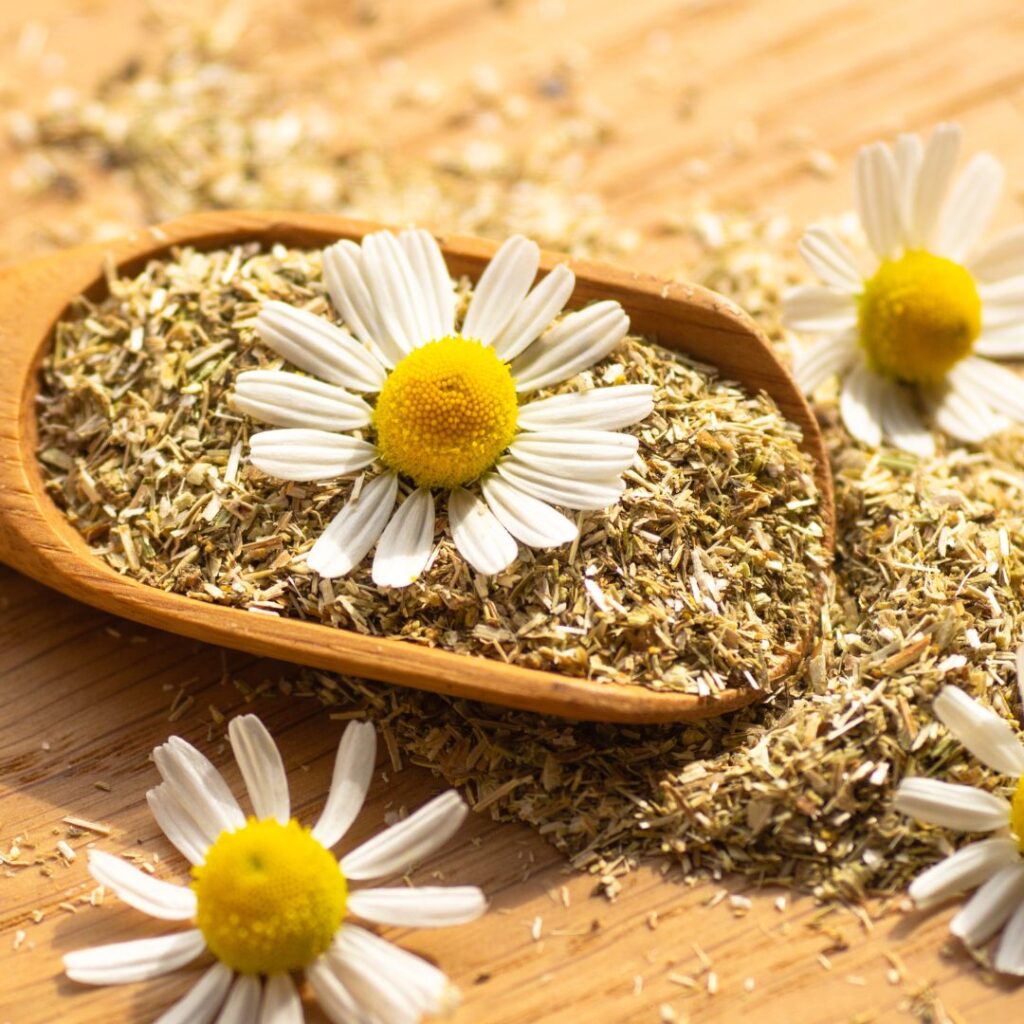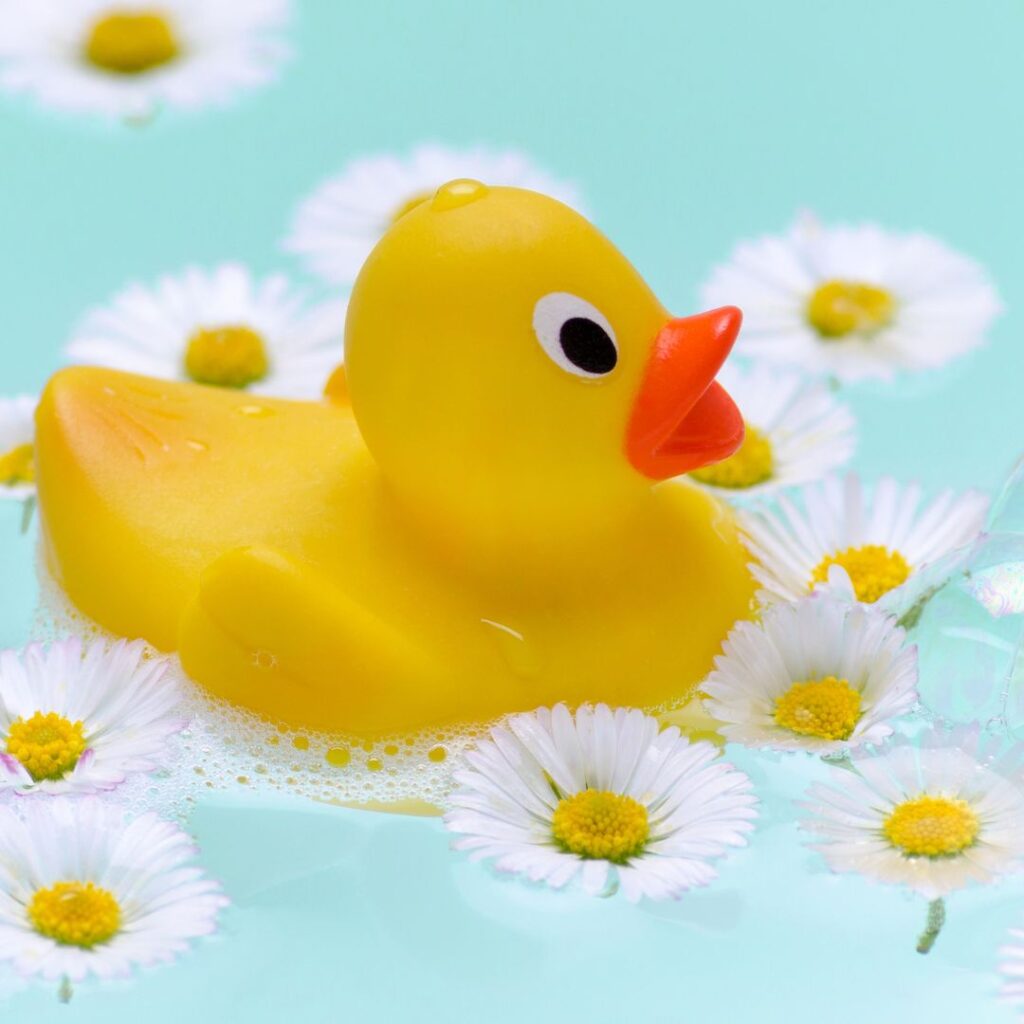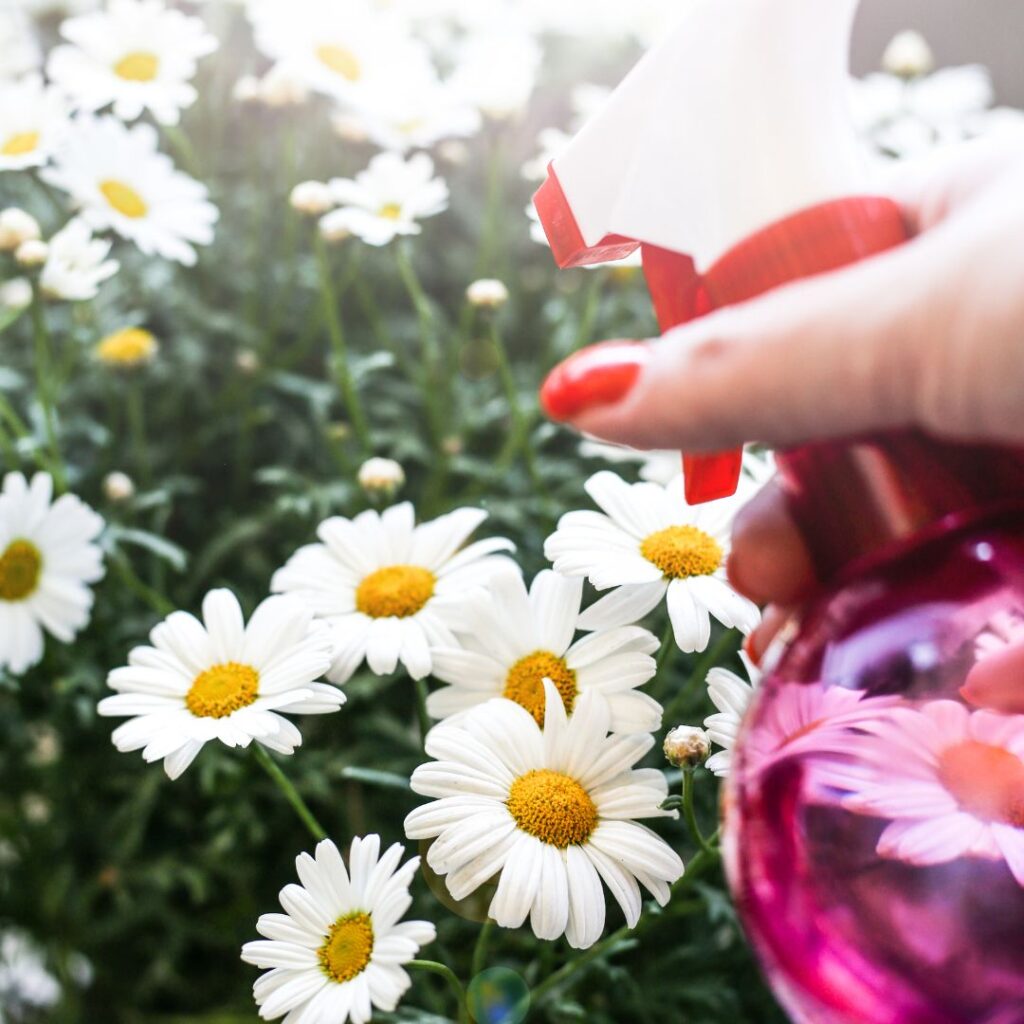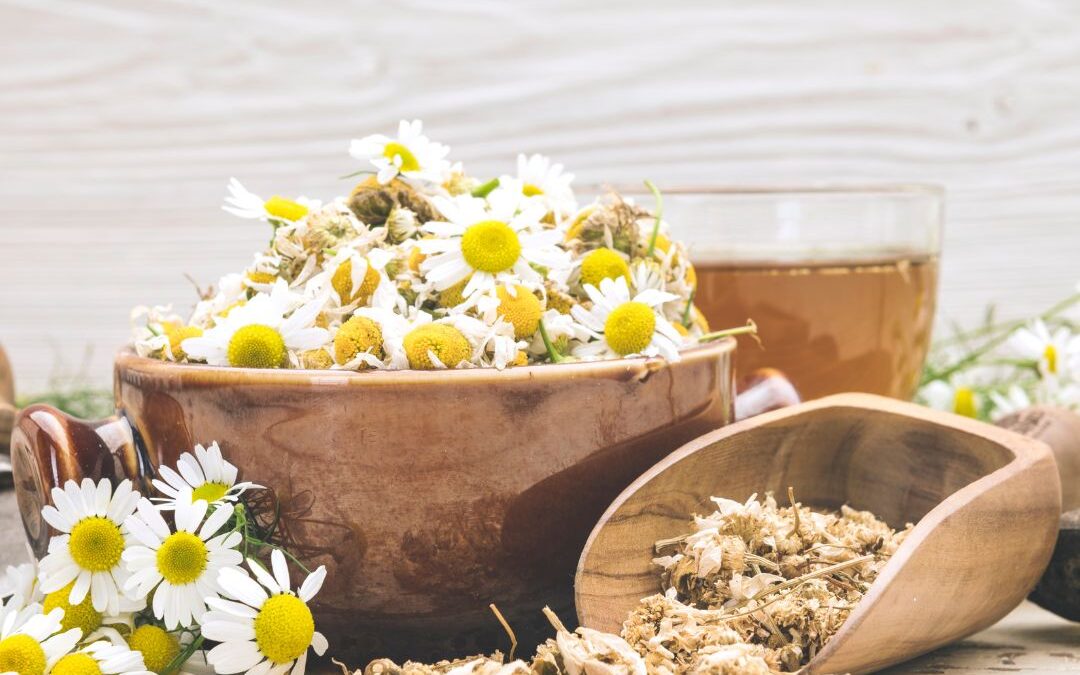Chamomile is one of the most readily available yet often overlooked herbs. Her ability to attend to almost everything and everyone makes her invaluable in your herbal home care kit. Whenever you find yourself in turbulent times, think chamomile.

She’s your herb for inviting and calm, calming tension, inflamed skin, dodgy digestion, nervous tension, pain and fevers, to name just a few of her traditional uses.
Chamomile can be used at any time of life, from babies, children, all the way through to the elderly inhale a cup of chamomile tea, the loose flowers rather than the tea bag. And what does it remind you of? For me, it’s sunny meadows or sunkissed apples.
the history of chamomile
Chamomile was used as medicine by the Greeks, the Romans and the Saxons, and their references through its name all refer to its apple scent. Chamomile was a strewing herb, a witness to weddings and the bridal shower, births, deaths and burials.

The key theme running through its medicinal use by the Greeks, the Romans and the Saxons was its ability to break a fever, very important in those times. It was also referenced in relation to managing pain and supporting women’s problems, particularly support during labour.
Modern research has confirmed its use as a smooth muscle relaxant, an anti-inflammatory, and as a tension-releasing nervine all useful qualities during labour. There are two types of chamomile that are used medicinally, Roman chamomile and German chamomile. Their actions are similar, but Roman chamomile is much more bitter than German chamomile. I discovered this in a very memorable way when I placed just two Roman chamomile fresh flower heads in a pot of hot water. I took a drink. Boy, was it bitter.
fabulous digestive herb
Chamomile is a fabulous digestive herb. It regulates peristalsis, so it’s good for constipation and for diarrhoea, and because it’s a nervine, it reduces anxiety, so it can help regulate digestion through its action on the nervous system as well.

Research has confirmed its effectiveness in IBS and stress-related gut disorders. It’s an anti-inflammatory, and it’s also a mild pain reliever as well. These actions also support our babies with colic.
Breastfeeding mums can pass on the goodness of chamomile through their breast milk or try a bottle with diluted chamomile tea in it. It works a treat.

Bathing your baby in a bath infused with chamomile tea helps both parent and baby to settle. If it’s for the baby, just make sure that it’s nice and weak with just a tea bag, or maybe two, depending on the amount of water in the bath.
Bathing in chamomile is one of my favourite applications, especially if you’re treating sunburn, windburn or itchy insect bites, and it can be as easy as four to six chamomile tea bags added to the bath. If you’re an adult, check out my Instagram feed at Tracy C Tutty for a herbal bath bag recipe. Chamomile is a wonderful skin herb. It calms, it brightens, it soothes and it heals, and it does this for any space inside your body and out.
The many uses of chamomile
There’s a tonne of research supporting Chamomile’s ability to calm anxiety and nervous tension. It’s a great tea when an overly busy mind or a stressful day is getting in the way of sleep, particularly if it’s combined with some green oat and some skull cap. Now, chamomile has a special place in the gardener’s heart. It’s known as the plants’ physician. So plant chamomile near ailing plants or apply chamomile tea to them. Just make it nice and weak. Soaking your seeds in weak chamomile tea can prevent damping off. Damping off is where your germinating seeds are killed by a particular fungus that’s found in the ground.
The tannins, found in chamomile and many other herbs can increase germination by softening the seed’s outer shell.

A really strong chamomile tea makes an effective insecticide. Good to know for all you organic gardeners. To make it, you steep one cup of chamomile flowers in three cups of water for 24 hours. Strain it off and keep it in a spray bottle.
Spray on your affected plants, but please make sure you don’t spray on our beloved bees. This works best before the sun is high in the sky. The best garden neighbours for chamomile are the brassicas, so, your cabbage, your broccoli and your cauliflower, and also onions, beans and cucumbers, and if you want to up the pollinating ante, plant chamomile near your Solanaceae family, and these are your tomatoes, your peppers and your aubergines. There are so many ways to incorporate chamomile into your daily. Whether it’s getting a whiff as you brush by her in the garden or you’re closing a busy day by burning chamomile essential oil in the diffuser or soaking in a chamomile bath, find a way to defrazzle your nervous system with the aid of chamomile and bring a little more calm into your day.

